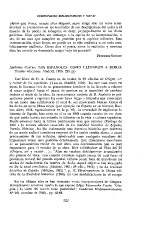Resultados: visualización detallada
Registro 1 de 1 para la búsqueda tipo de materia Enfermedades en salmones, rickettsia, histopatología, depresión inmune
Piscirickettsiosis: lesiones en salmón del atlántico (Salmo salar) infectados naturalmente con Piscirickettsia salmonis
Julio (MV) Larenas H.
Loreto V. (MV) Hidalgo
Hernán (MV) Garcés A.
John L. (PhD) Fryer
Pedro (MV) Smith S.
1995
-
Datos de edición
Avances en Ciencias Veterinarias; Vol. 10, No. 1 (1995): Enero-Junio
Universidad de Chile - Tipo de Documento Libro
-
Materia
Salmon disease, rickettsia, histopathology, immune depression
Enfermedades en salmones, rickettsia, histopatología, depresión inmune -
Descripción
Three groups of Atlantic salmon (Salmo salar) naturally infected with Piscirickettsia salmonis were analyzed by necropsy and histopathology. Fish were collected from saltwater farmings in the Southern Chile. In group 1 fish did not show clinical signs of the disease. In group 2, fish showed mild signs of piscirickettsiosis and the group 3 were severely affected and most of them were moribund. Lesions were more severe and extensive in th ...Three groups of Atlantic salmon (Salmo salar) naturally infected with Piscirickettsia salmonis were analyzed by necropsy and histopathology. Fish were collected from saltwater farmings in the Southern Chile. In group 1 fish did not show clinical signs of the disease. In group 2, fish showed mild signs of piscirickettsiosis and the group 3 were severely affected and most of them were moribund. Lesions were more severe and extensive in the group 3, but necrosis and endothelial lesion were present in a variety of tissues in all the groups. The main lesions were necrosis of hematopoietic tissue in spleen and kidney. Inflammatory response was scarce specially in group 3. Necrosis of neurons and endothelial cells of brain was also observed and P. salmonis was present in the cytoplasm of some neurons. The lesions in the lymphoid tissue of spleen and kidney and the depletion of immunocompetent cells could predispose the fish to secundary infection by other opportunistic or pathogenic agents.Facultad de Ciencias Veterinarias y Pecuarias
- Identificador 34881






